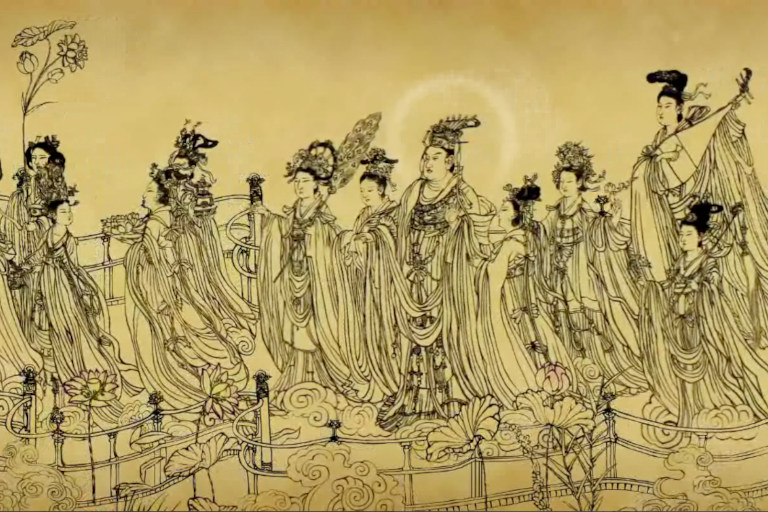Born on July 19, 1895, in Yixing, Jiangsu, Xu Beihong began learning painting from his father at a young age. He later moved to Shanghai to work part-time while continuing his studies, eventually traveling to Japan and France to further cultivate his artistic abilities.
The Louvre Museum in France had a profound impact on Xu Beihong. He would spend entire days there, so immersed in the art that he would forget to eat or drink. European classical paintings, masterpieces of the Renaissance, and the essence of human art became all the nourishment he needed, feeding Xu’s artistic soul.
Educational leadership and collaboration
Upon returning to China, Xu Beihong was appointed Dean of the Art College of Peking University in September 1929, recommended by Cai Yuanpei. A competent dean seeks equally talented professors, and Xu invited Qi Baishi to be one. Qi had been born to a peasant family and received little formal education, becoming a carpenter at a young age to help support his family. However, he began teaching himself art and wished to pursue it as a career. Eventually, he received formal artistic training and realized his dream of becoming a full-time artist. Qi was deeply moved by the opportunity to teach, saying: “I, a simple carpenter from Xingtang, am now a professor at a higher education institution.”
Mastery of painting horses
Xu Beihong was exceptionally skilled at painting horses, focusing on the accurate depiction of anatomy and skeletal structure. His horses were precise, and the bold ink splashes did not diminish the detailed display of muscles. In both artistic creativity and the restoration of traditional techniques, Xu Beihong succeeded.

The missing 88th immortal
However, there was one thing he found hard to achieve. After experiencing the artistic expression of grand beliefs and divine thoughts amidst the treasures of the Louvre, he felt deep regret that these same things could not be realized in modern China. The revolutionary and destructive atmosphere made it difficult for spiritual vitality in art to survive, silencing the call for faith in Chinese culture’s gods and Buddhas.
When Xu Beihong stumbled upon the Scroll of the Eighty-Seven Immortals, he even suspected that it was meant for him. The scroll depicted an impressive scene of immortals traveling, expressed purely through lines, each representing infinite vitality. The artwork’s similarities to the Greek Winged Victory of Samothrace in the Louvre led Xu to proclaim that it could rival the noblest European masterpieces. Most importantly, Xu found resonance not only in art, but in his life’s memory. Counting only 87 immortals, he realized one was missing and believed himself to be that absent 88th immortal.
The journey of a lost scroll
After acquiring the Scroll of the Eighty-Seven Immortals in a deal involving a substantial amount of money and the exchange of some of his own paintings as well, Xu almost never let it out of his sight. However, while he was away for an exhibition in Kunming, his residence was burgled during an air raid, resulting in the loss of the treasured scroll. This devastating loss caused Xu to collapse in shock and become gravely ill, marking the beginning of a relentless quest to retrieve his beloved artwork.

In 1944, a student told Xu Beihong she had seen the long-lost Scroll of the Eighty-Seven Immortals in Chengdu. Xu spared no expense, satisfying the outrageous demands of the likely thieves, to recover the artwork.
Living through turbulent times
The period of the Republic of China was marked by constant warfare, yet it was a productive era for Chinese artists like Xu Beihong. His lifelong motto was “to persist in going one’s own way.” It seems he could only thrive in an era that allowed masters to follow their unique paths. Fortunately, Xu passed away in 1953 before the political upheavals that could have affected his work.
During the Cultural Revolution, Xu Beihong’s works were almost destroyed. His wife, Liao Jingwen, managed to lock them in a hall near the Taihe Palace of the Forbidden City for 13 years. The damp environment caused damage, and even now, Liao, as the director of the Xu Beihong Memorial Museum, continues to work on restoring these precious paintings.
An irreplaceable legacy
Yet, these masters of the Republican era remain irreplaceable, inimitable, and unsurpassed today. Their art transcends time, embedding profound influences in contemporary Chinese culture, testifying to the indomitable spirit of Xu Beihong and his contemporaries.
See Part 1 here.
Translated by Joseph Wu
Follow us on Twitter, Facebook, or Pinterest

